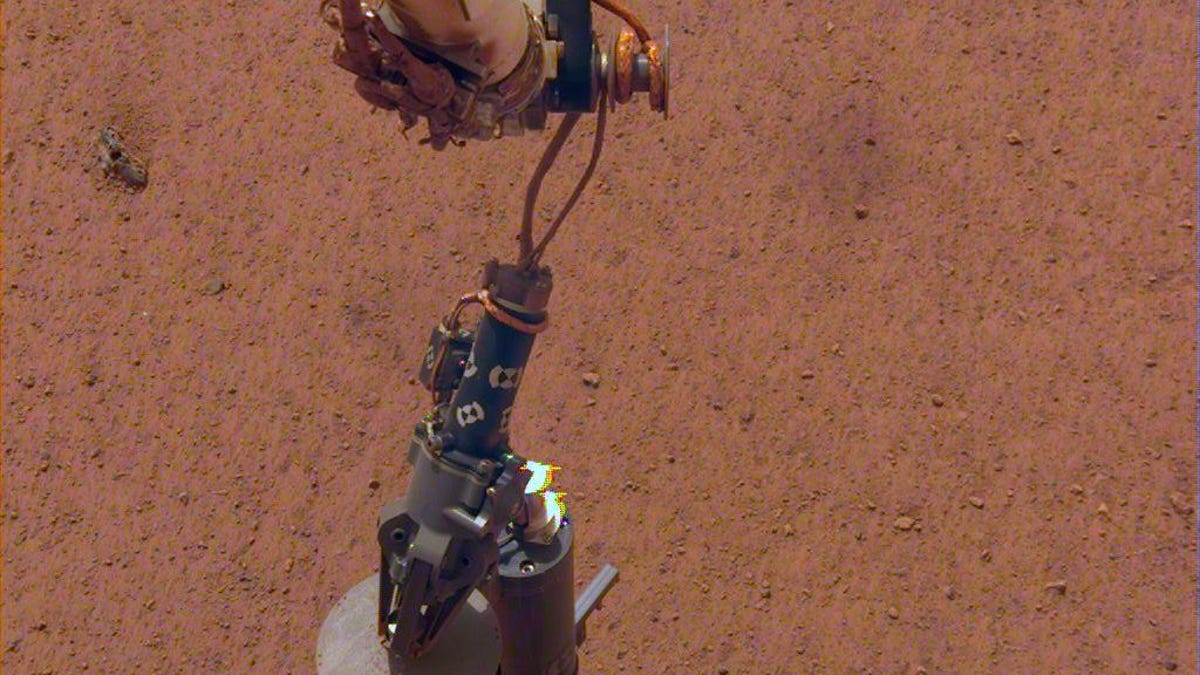NASA's InSight Mars lander got stuck between a rock in a hard place
The robot's heat-measuring probe, known as a "mole", has hit a snag.

NASA's InSight lander set its heat probe, called the Heat and Physical Properties Package (HP3), on the Martian surface on Feb. 12, 2019.
Hammer time appears to be over.
NASA's InSight lander, which is currently the rover in charge on the Red Planet, has hit its first snag.
The lander has been snapping pics and exploring Mars since Nov. 26, 2018, and successfully set its heat probe onto the planet's dusty surface on Feb. 12.
That probe, called the Heat Flow and Physical Properties Probe or HP3 for short, is designed to dig up to 16 feet (5 metres) below the surface and measure the heat coming from inside the planet. Also known as a "mole", the 16-inch-long (40-centimetre-long) probe started hammering itself into the soil on Feb. 28.
But then it stopped. NASA rallied with a second bout of hammering on March 2, but it was of no use. The mole appears to be stumped.
"Scientists suspect it hit a rock or some gravel," NASA said in a blog post Tuesday.
The team are wondering what went wrong, after the mole proved adept at pushing small rocks aside or wending its way around them during testing prior to InSight's launch. Few rocks appeared on the surface surrounding the lander, according to the post, suggesting there wouldn't be many rocks below ground.
"The team has decided to pause the hammering for now to allow the situation to be analysed more closely and jointly come up with strategies for overcoming the obstacle," HP3 Principal Investigator Tilman Spohn of DLR, the German Aerospace Center which provided NASA with the instrument, wrote in a blog post.
The team will hold off from further hammering for about two weeks. The good news is the probe's heat measuring functions appear to be working as expected.
The little lander had been going great guns since its landing, using its robotic arm to place a seismometer on the Mars surface in December, and then shielding that seismometer with a cover from winds and temperature fluctuations.

